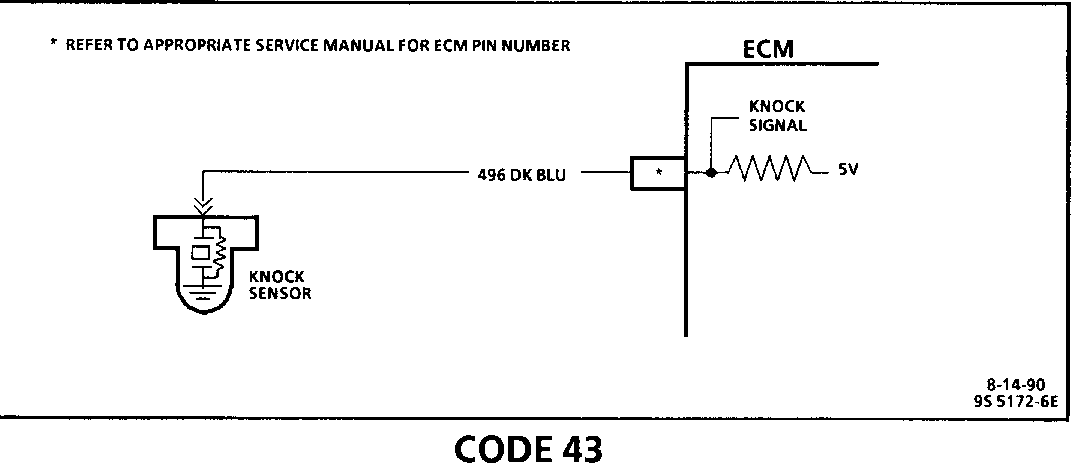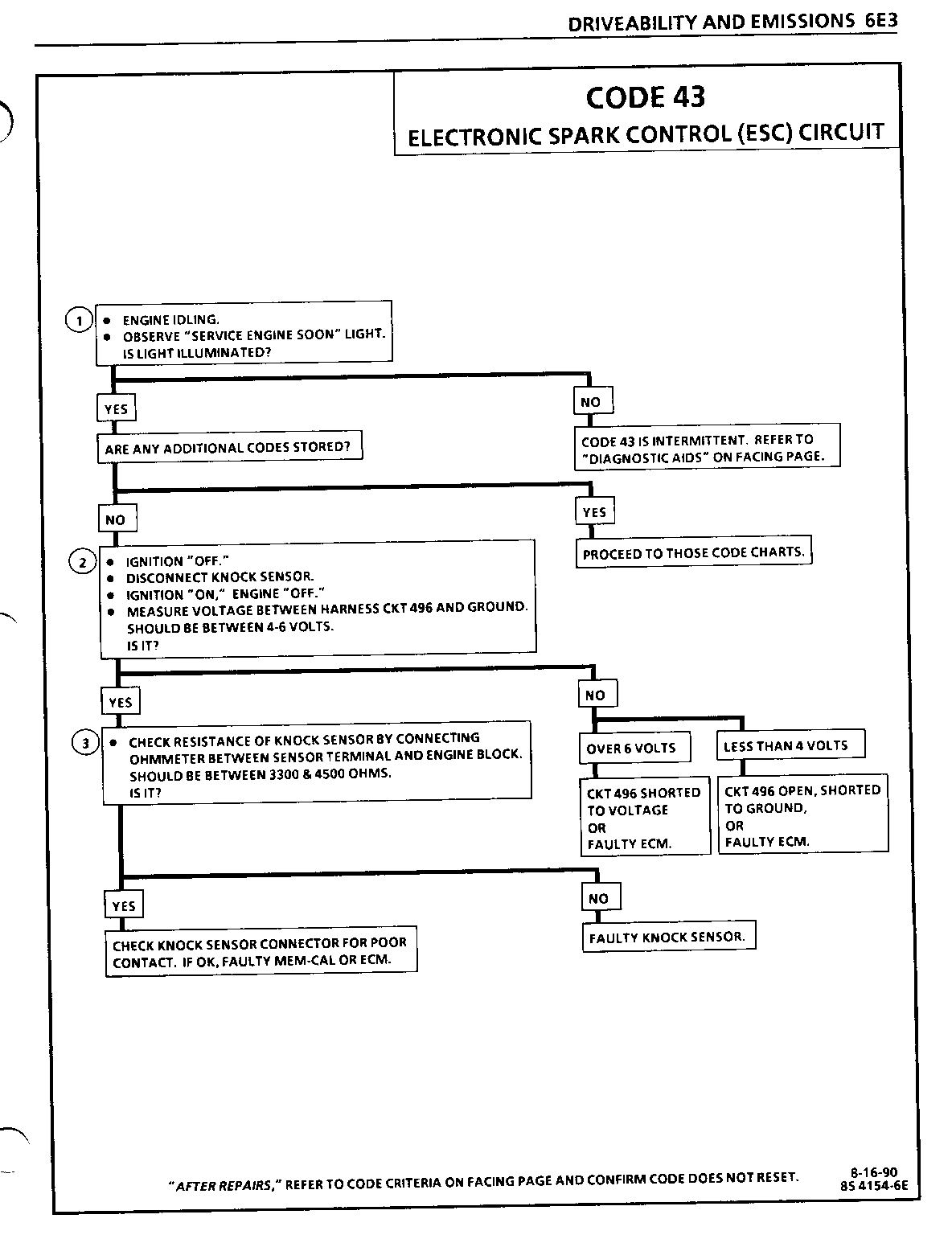SERVICE MANUAL UPDATE-SEC.6E3 DRIVEABILITY/EMISSIONS-CODE 43

Subject: SERVICE MANUAL UPDATE - SECTION 6E3 DRIVEABILITY AND EMISSIONS REVISED CODE 43 Models Affected: 1987-1991 2.0L/2.3L/2.81/3.lL/3.4L SUNBIRD, GRAND AM AND GRAND PRIX
This bulletin replaces current Code 43 Charts and Facing Pages in the Service Manual Section 6E3 "Driveability And Emissions" for the vehicle applications listed below.
The diagnostic procedure should be used in conjunction with the appropriate service manual application to identify proper ECM connector terminal designation.
Models Affected:
1987-1990 2.0L VIN M SUNBIRD 1987-1989 2.0L VIN M GRAND AM 1987-1991 2.3L VIN D and A GRAND AM 1990-1991 2.3L VIN D and A GRAND PRIX 1988-1991 2.8L/3.lL VIN W and T GRAND PRIX 1991 3.4L VIN X GRAND PRIX
Circuit Description:
The knock sensor detects engine detonation and the ECM retards the electronic spark timing based on the signal being received. Under a no knock condition, the circuitry within the knock sensor causes the ECM 5 volts to be pulled down so that CKT 496 would measure about 2.5 volts. The knock sensor produces an AC signal which rides on the 2.5 volts DC voltage. The amplitude and signal frequency are dependent upon the knock level.
The ECM performs two tests on this circuit to determine if it is operating correctly. If either of the tests fail, a Code 43 will be set.
- If there is an indication of knock for 3.67 seconds over a 3.9 second interval with the engine running.
- If ECM terminal voltage is either above about 3.75 volts (indicating open CKT 496), or below about 1.25 volts (indicating CKT 496 is shorted to ground) for 5 seconds or more.
Test Description: Number(s) below refer to circled number(s) on the diagnostic chart.
1. If the conditions for the test as described above are being met, Code 43 will be currently set and the "SES" light will be illuminated.
2. The ECM has a 5 volts signal through a pull-up resistor which should be present at the knock sensor terminal.
3. This step checks that the internal resistance of the knock sensor is within an acceptable range.
Diagnostic Aids:
Check CKT 496 for a potential open or short to ground.
Also check for proper installation of MEM-CAL. Refer to "Intermittents" in "Symptoms," Section "6E3-B".
Mechanical engine knock can cause a knock sensor signal. Abnormal engine noise must be corrected before using this chart.


General Motors bulletins are intended for use by professional technicians, not a "do-it-yourselfer". They are written to inform those technicians of conditions that may occur on some vehicles, or to provide information that could assist in the proper service of a vehicle. Properly trained technicians have the equipment, tools, safety instructions and know-how to do a job properly and safely. If a condition is described, do not assume that the bulletin applies to your vehicle, or that your vehicle will have that condition. See a General Motors dealer servicing your brand of General Motors vehicle for information on whether your vehicle may benefit from the information.
